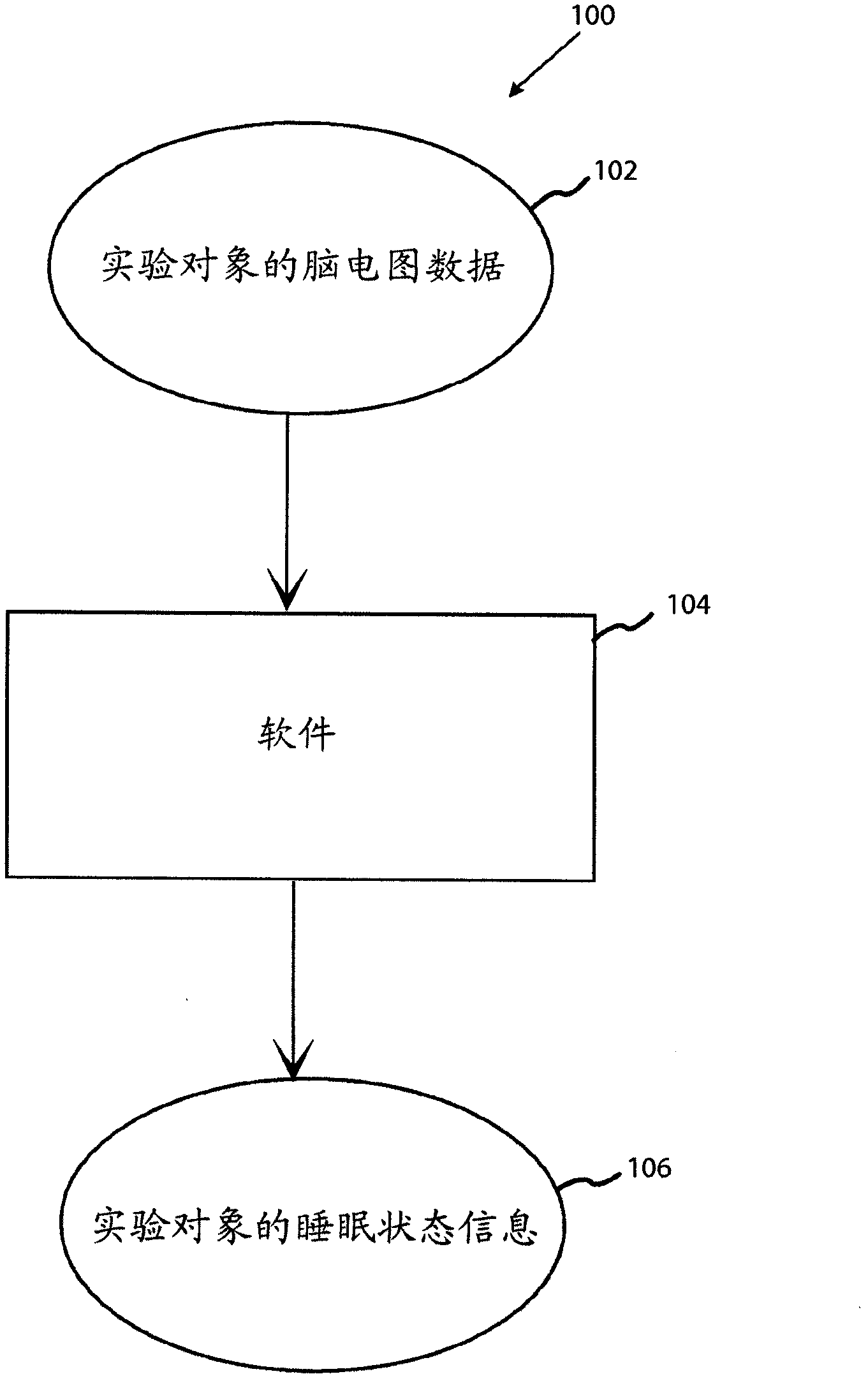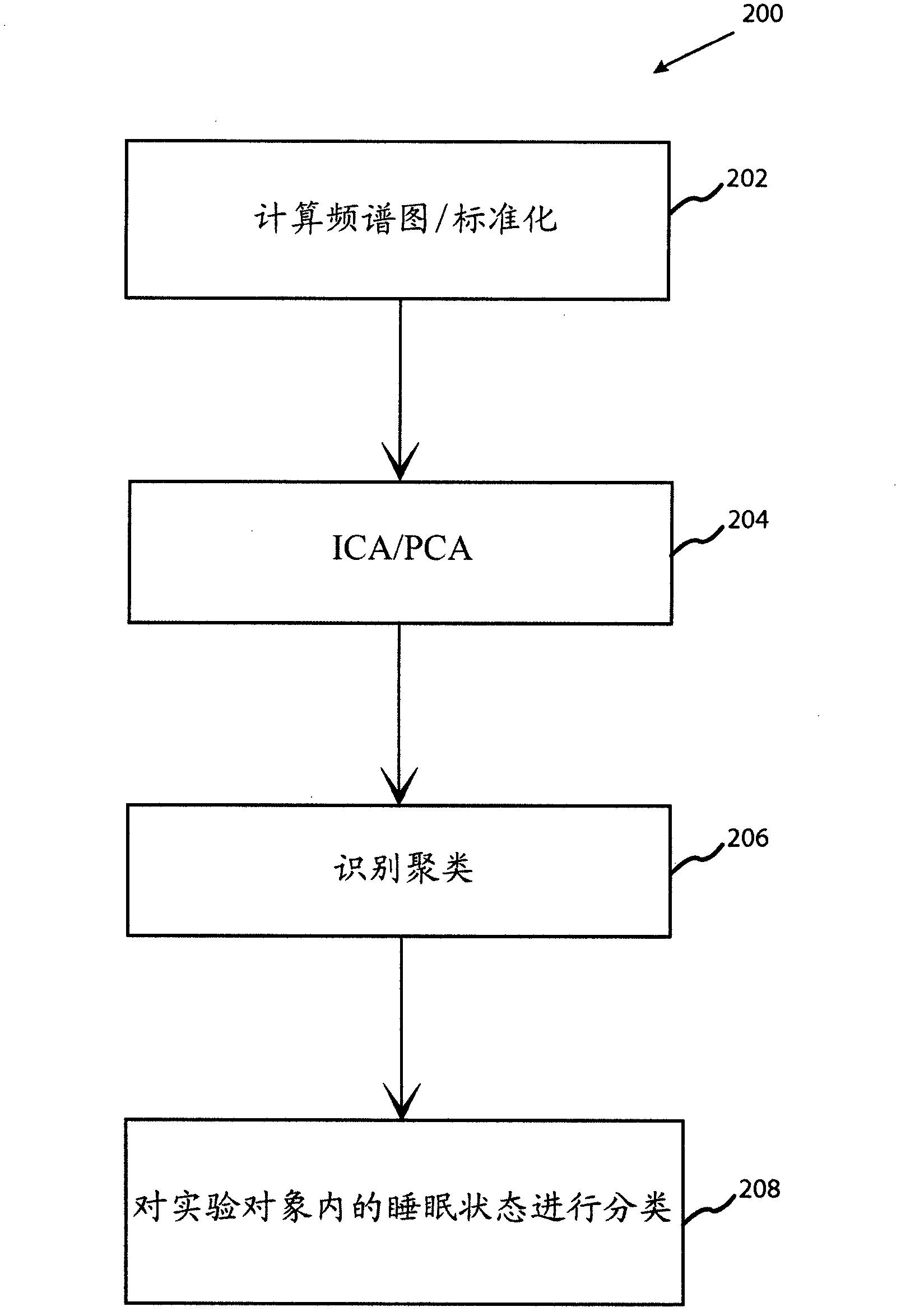Methods of identifying sleep and waking patterns and uses
A sleep and sleep state technology, applied in application, bioelectrical signal measurement, medical science, etc.
- Summary
- Abstract
- Description
- Claims
- Application Information
AI Technical Summary
Problems solved by technology
Method used
Image
Examples
Embodiment 1
[0121] Use isoflurane to anesthetize the mouse. Shave the scalp gently. Apply conductive gel (electrogel), and use colloidal cotton to fix standard 6mm gold-plated electrodes. By using the software and technology described in PCT application WO2006 / 1222201, the result data is analyzed using the above-mentioned advanced computing technology.
[0122] The voltage signal from the brain of the mouse is collected through electrodes and sent to the computer for analysis. The signal is roughly divided into 3 second signal periods. The frequency spectrum of each period is calculated to generate the entire recorded spectrum. The final spectrum is then normalized in frequency, which allows detection of previously unidentified frequencies.
[0123] In each time period, only the frequency with the highest deviation corresponding to the baseline is drawn. The final figure shows the different features in this space relative to the baseline. See again figure 2 These signals can be used to ...
Embodiment 2
[0149] Embodiment 2 shows how the exemplary method should be applied, by using automatic or manual data, and determining the sleep mode based on a single channel EEG.
[0150] Example 2
[0151] From 26 different polysomnography records obtained in 26 healthy human subjects, 26 nights of sleep (8 hours per night) single-channel EEG (derivation of C3-A2) were obtained. EEG data and manual scoring are provided by the experimental procedures approved by the institutional review board of each institution.
[0152] Collect EEG data at 256 Hz, and use a 60 Hz step filter (UCSD) to perform band-pass filtering of 0.3-100 Hz on the EEG data, or collect EEG data at 250 Hz and perform band-pass filtering of 0.53-70 Hz on the EEG data (MPI). Enlarge these records at 10K and manually score these records within a 30-second period based on R-K. For each recording, the spectrogram of the whole night can be calculated on 2 orthogonal cones over a period of 30 seconds by using standard multi-windo...
Embodiment 3
[0175] The sleep data of four pairs of twins were analyzed by using the above sleep staging technique.
[0176] Each column in 1-4 corresponds to 4 pairs of twins (the first pair is fraternal, and the second 2-4 are identical). Only REM (Time Split in Time) is shown. The twins exhibit a similar temporal division pattern ( Figure 34 ).
[0177] The general structure and technology and more specific implementations are described here, which can be used to influence different ways of achieving more general goals.
PUM
 Login to View More
Login to View More Abstract
Description
Claims
Application Information
 Login to View More
Login to View More - R&D
- Intellectual Property
- Life Sciences
- Materials
- Tech Scout
- Unparalleled Data Quality
- Higher Quality Content
- 60% Fewer Hallucinations
Browse by: Latest US Patents, China's latest patents, Technical Efficacy Thesaurus, Application Domain, Technology Topic, Popular Technical Reports.
© 2025 PatSnap. All rights reserved.Legal|Privacy policy|Modern Slavery Act Transparency Statement|Sitemap|About US| Contact US: help@patsnap.com



